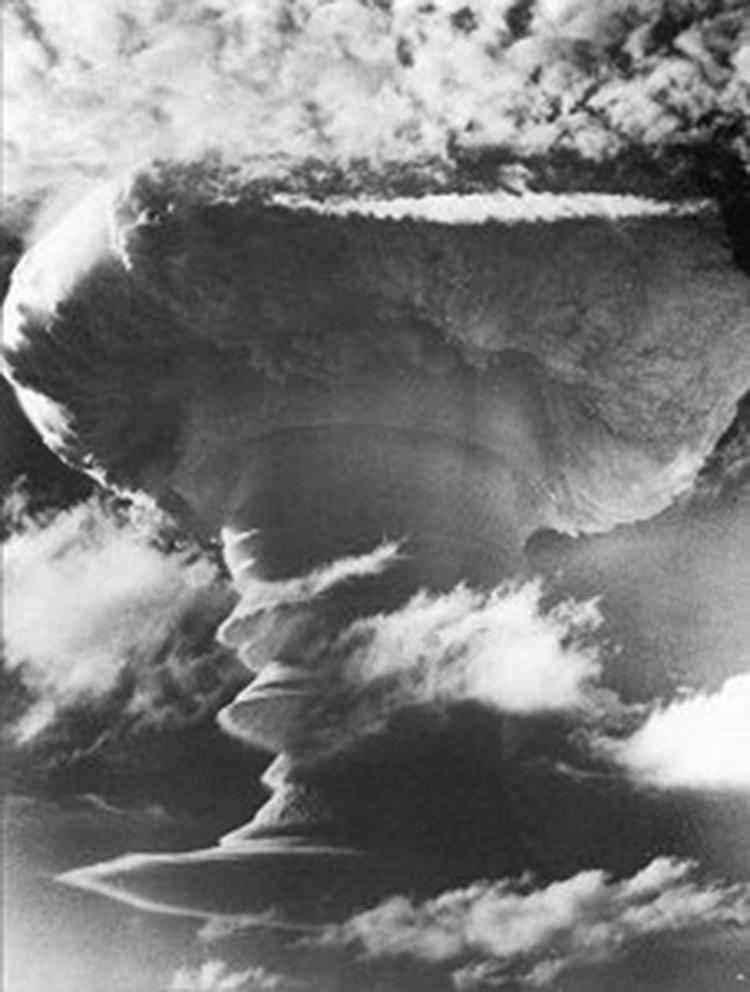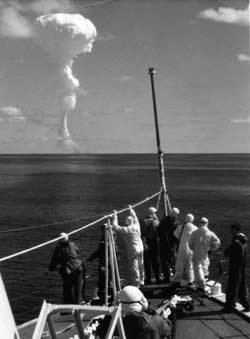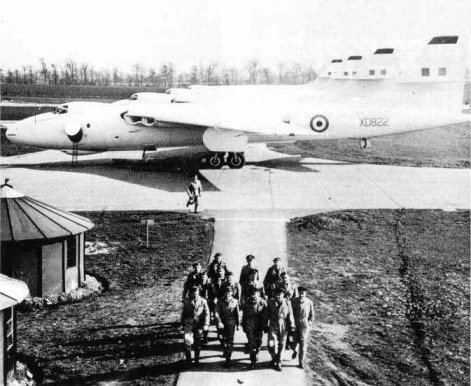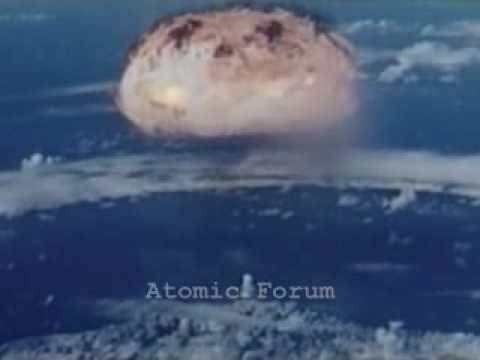
|
|
|
テーマ:戦争・紛争・テロ(901)
カテゴリ:カテゴリ未分類
◆Operation Grapple
Updated on Aug 16, 2018 Country United Kingdom Test type air drop, balloon Start date 1956 Period 1957-1958 Previous test series Operation Antler Number of tests 9  Test site Kiritimati (Christmas Island), Kiribati; Malden Island, Kiribati Max. yield 3 megatonnes of TNT (13 PJ) ◆Operation Grapple and operations Grapple X, Grapple Y, and Grapple Z, were the names of British nuclear weapons tests of very early hydrogen bombs. These tests were carried out from 1956 until 1958 at Malden Island and Christmas Island in the Central Pacific Ocean. Nine nuclear explosions were executed during these series of nuclear weapon tests, culminating in the United Kingdom's becoming the third recognised possessor of thermonuclear weapons. ◆Summary  All nuclear bombs used during Operation Grapple, Grapple X, Grapple Y, and Grapple Z were exploded high in the atmosphere, rather than being detonated on the ground, in order to reduce the production of nuclear fallout.  The unproven H-bomb designs being developed by British weaponeers required full-scale testing of their capabilities, hence Operation Grapple was carried out as a massive military operation in the Central Pacific, and this was the largest British military operation carried out since World War II. The preparations for Operation Grapple, including building the necessary structures on Kiritimati, began at the end of May 1956. About 1,200 civilians and servicemen were sent to Kiritimati during 1956.  The first deliveries to Kiritimati were made by the troopship Devonshire, which steamed to the Central Pacific from East Asia and took construction troops aboard at Fiji. These men had flown there from the UK on commercial airliners. The first project on Kiritimati, which was finished in October, was to rebuild the main runway at the airport. The majority of troops and civilians were then flown in from the UK, via Canada and Hawaii, in chartered airliners. The original troops began to be flown out in mid-1957  While Kiritimati was the main base, three other islands supported Operation Grapple. The area around Malden Island, located about 330 kilometres south of Kiritimati, was to be the site for the bomber-dropped tests, and Penrhyn Island, 320 kilometres farther south was used as a technical monitoring site and as a weather station. Air deliveries of cargo for Operation Grapple were generally sent via Hickam Air Force Base (of the United States Air Force) in the American Territory of Hawaii, where a transport group of the Royal Air Force was assigned.  Seaborne supplies for Operation Grapple were usually shipped via Australia or New Zealand, using freighters of the Royal Fleet Auxiliary (RFA). The British Royal Navy built a seawater processing plant on Kiritimati early during Operation Grapple, and this provided freshwater for drinking and cooking, and brackish water for bathing.  ◆The first trial series was Grapple, which consisted of three shots. All of these nuclear bombs were dropped and detonated over Malden Island. The first test of the series was Grapple 1, code-named Short Granite. It was a two-staged nuclear weapon that had a predicted yield of about one megaton. This bomb was dropped by a Vickers Valiant bomber XD818, of No. 49 Squadron RAF, piloted by Wing Commander Kenneth Hubbard, off the shore of Malden Island on 15 May 1957. Weighing about 4,550 kilograms, this bomb exploded with a power of about 300 kilotons, a yield far below its designed capability. Despite this problem, the British government hailed this test as a successful thermonuclear explosion, and the government announced to the world that the UK had become a thermonuclear power. While the results of this test were disappointing, the British learned much about radiation implosion in H-bombs. ◆The next test was Grapple 2, code-named Orange Herald. This was a large fission bomb which was hoped to arm a future ballistic missile. The bomb was dropped and detonated by a Valiant bomber on 31 May 1957. It exploded with a force of about 720 kilotons. The yield was the largest ever achieved by similar bomb designs. This bomb was hailed by the government as a new type of hydrogen bomb, and the truth that it was actually a fission bomb was kept secret by the government until the end of the Cold War. A 400 kiloton very large atomic bomb code-named Green Grass was derived from Orange Herald, and it was deployed until H-bombs became available. ◆The last shot was Grapple 3, code-named Purple Granite. This was a last-minute addition to the operation and was hoped to give a larger yield than Short Granite. The bomb was detonated on 19 June 1957, with a 150 kiloton yield. Other designs were not tested: Green Bamboo was a single-stage thermonuclear bomb similar to the Soviet Joe-4, and Orange Herald (large) was a "political bomb": a large fission bomb that was not suitable for use as a weapon but was certain to give a high yield, to ensure that Britain would not appear as a failed nuclear power. The two Granites and Green Bamboo were designed to achieve high yields by using the Li-6 D/U-238 cycle rather than the large-scale fusion of deuterium achieved at Grapple-Y. ◆Grapple X Following the disappointing results of the first Grapple trial, Grapple X was conducted at Kiritimati. For Grapple X, the bombs were exploded over Kiritimati instead of over Malden Island to save time and money. With the experience and knowledge gained from the first Grapple tests, the weaponeers had developed a new H-bomb design with a 50 percent more powerful fission primary stage and a simplified thermonuclear secondary. Grapple X was dropped and detonated over the southern end of Kiritimati on 8 November 1957. The two-stage thermonuclear bomb exploded with a yield of about 1.8 megatons. This was close to being the real hydrogen bomb Britain wanted, but used a relatively large quantity of (expensive) highly enriched uranium. The explosion did some damage to the island, resulting in some demolished and damaged military buildings. This damage was due to the higher-than-expected yield of the explosion. Grapple X was spectacularly successful, exceeding its predicted yield of one megaton by about 80 percent. The UK had become a thermonuclear power with the detonation of Grapple X. ◆Grapple Y Grapple Y sought to develop a more efficient thermonuclear bomb based on the successful Grapple X design. Like Grapple X, only one detonation was conducted during Grapple Y. The bomb was detonated off Kiritimati on 28 April 1958. It was dropped by Vickers Valiant bomber XD818 of No. 49 Squadron RAF, piloted by Flight Lieutenant T. E. B. Chambers. This bomb had an explosive yield of about 3.0 megatons, and it was the largest British nuclear weapons test ever executed anywhere. The design of Grapple Y was notably successful because much of its yield came from its thermonuclear reaction instead of from the fast fission of a heavy uranium-238 tamper - hence making it a true H-bomb, and also because its yield had been closely predicted—indicating that its designers understood what they were doing. ◆Grapple Z series With a nuclear testing moratorium quickly approaching, Operation Grapple Z was carried out at Kiritimati during mid-1958. This was a four-bomb test series, and the largest of the four in the Grapple series. Grapple Z sought to develop lighter nuclear warheads as well as weapons that were radiologically hardened - meaning they would not be destroyed prematurely if exposed to nuclear radiation from other nuclear explosions. Two of the Grapple Z tests were fission bombs tested for development of the primary stage of a two-stage hydrogen bomb. The first shot, with the code name of Pendant, was detonated on 22 August 1958. Rather than being dropped from a bomber, this bomb was suspended from a string of four vertically stacked barrage balloons. The Pendant test had a yield of about 24 kilotons, and it used solid hydrogen fusion boosting using lithium deuteride. The next shot, called Flagpole, was dropped by Vickers Valiant bomber XD822, flown by Flight Lieutenant S. O'Connor, over Kiritimati on 2 September 1958. This marked the first live drop of a British nuclear weapon using blind radar technique. The bomb was a smaller version of the one exploded in Grapple Y, and it detonated with a yield of about 1.2 megatons. This test was followed by one called Halliard 1, on 11 September 1958, which was an unusual three-stage bomb with two nuclear-fission components followed by one thermonuclear stage. This bomb had its predicted yield of 800 kilotons, and it was supposedly immune to exposure from another bomb despite its not using boosting. The final test in the Grapple Z series was called Burgee, on 23 September 1958, another balloon-borne test which was an atomic bomb boosted with gaseous tritium. It had a yield of about 25 kilotons. The last bomb was the very last nuclear explosion carried out in the atmosphere by the UK. The weapon makers of the UK had demonstrated all of the technologies that were needed to produce a one-megaton hydrogen bomb that weighed no more than one ton (2,200 pounds) and was immune to premature detonation caused by nearby nuclear explosions. ◆Cooperation with the United States The practical result of the British H-bomb project (in conjunction with other political events ) was that the United States became willing to enter into the 1958 US–UK Mutual Defence Agreement. This put an end to independent nuclear weapons development by the UK in favour of a program that was closely based on the American designs. The benefit to the UK was that this was much cheaper than developing its own designs for weapons that could be made in large numbers, and then deployed. An additional benefit was that the UK was able to buy highly enriched uranium from the US and also sell plutonium to it made in British nuclear reactors. This deal was useful to both parties and profitable for the UK. While the thermonuclear bomb designs tested by the UK during Operation Grapple were successful, they were never serially produced. The useful effect of the British tests was to increase the quality of information that the American Atomic Energy Commission was willing to share with the UK, and also for British weapons designers to learn how to use that information successfully. ◆Health effects In 2005, a Massey University study in New Zealand concluded that sailors from the Royal New Zealand Navy, Royal Navy, and Fijian Navy who observed the tests from nearby ships later suffered adverse health effects from exposure to radioactive fallout, including cancer and genetic abnormalities in the veterans' children. Various veterans' organisations filed a class action lawsuit against the British Ministry of Defence following the publication of the study. The United Kingdom's Ministry of Defence maintains that few people were exposed to any radiation or contamination at all, and that studies had shown little or no health effects. An analysis of illnesses in veterans of Grapple and other weapons tests produced statistics that are hard to interpret. The veterans showed rates of illness that were slightly higher than the control group, but the control group had lower rates of illness than the population as a whole while the veterans had rates that were about the same. Neither of these results has a clear explanation. Reliable statistical analysis of the data is difficult because the samples are fairly small and incomplete. In March 2012, a group of 1,011 British ex-servicemen were denied permission to sue the UK Ministry of Defence by the Supreme Court, on the grounds that too much time had elapsed since they became aware of their medical conditions, under the terms of the Limitation Act 1980. ◆Environmental effects The effects of radioactive fallout from the Grapple tests were being researched coarsely by a 2010 British Government study that concluded the fallout would not reach concentrations that could affect the surrounding nature considerably. 🌟超📰黒星★新聞社☆Group お気に入りの記事を「いいね!」で応援しよう
Last updated
2021.11.16 02:33:33
コメント(0) | コメントを書く |